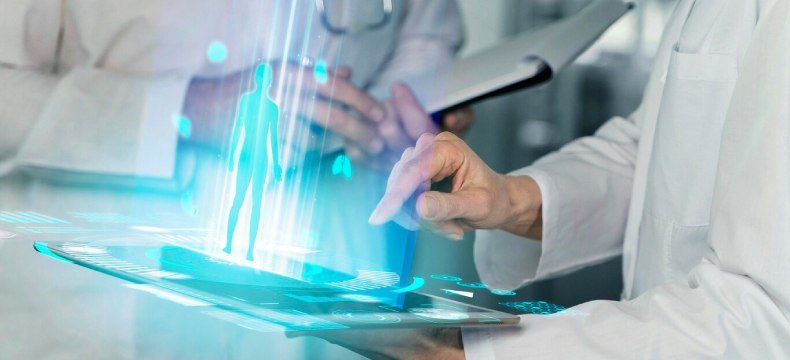In the dynamic and ever-evolving landscape of global health, collaborative efforts between health initiatives and industry leaders have emerged as pivotal drivers of innovation and progress. These strategic partnerships, forged with a shared commitment to improving health outcomes worldwide, leverage the diverse expertise, resources, and networks of both sectors to address pressing health challenges and enhance the quality of life for individuals across the globe.
The Power of Partnership: Driving Innovation in Health Solutions

At the core of collaborative initiatives between health organizations and industry leaders lies the transformative power of partnership. By harnessing the collective expertise and resources of both sectors, these collaborations drive forward the frontiers of medical innovation. Robust research, development, and implementation processes are undertaken, yielding groundbreaking advancements in medical treatments, technologies, and healthcare delivery systems. From pioneering pharmaceutical breakthroughs to the development of cutting-edge medical devices, the impact of collaborative innovation reverberates across the global health landscape, ushering in new possibilities for disease prevention, diagnosis, and treatment.
Vision – Fostering Collaboration for Global Health
The vision is clear: to foster collaboration between health science initiatives and industry leaders in order to promote the health of both individuals and communities on a global scale. This ambitious goal is driven by the recognition that by joining forces, these entities can maximize their impact and reach a broader audience. Through innovative partnerships and strategic initiatives, the aim is to leverage the collective expertise, resources, and networks of both sectors to address pressing health challenges and improve health outcomes worldwide. By working together, they seek to not only advance scientific knowledge but also to translate research into tangible solutions that benefit people’s lives. Ultimately, the vision is to create a healthier world where everyone has access to quality healthcare and the opportunity to lead fulfilling lives.
The Strategy – Delivering Quality Information for Maximum Engagement
Providing quality and useful information with the aim of engaging as many people as possible. This approach acknowledges the importance of content that is not only informative but also captivating and relevant to the target audience. Ensuring that the information delivered is of high quality and value increases the likelihood of capturing the attention and interest of a wide range of individuals. Through various channels and mediums, such as educational materials, online platforms, and community outreach programs, the goal is to disseminate information effectively and reach diverse demographics. By prioritizing engagement and relevance in the content provided, the strategy aims to foster greater awareness, understanding, and participation in health-related initiatives, ultimately leading to positive outcomes for individuals and communities alike.
Addressing Health Challenges Head-On

Central to the mission of collaborative partnerships is the proactive approach to addressing the myriad health challenges facing communities worldwide. With a multifaceted focus on prevention, diagnosis, and treatment, these partnerships tackle a broad spectrum of health issues. From combating infectious diseases and reducing maternal and child mortality rates to managing chronic conditions and promoting mental health, collaborative efforts serve as catalysts for positive change in health outcomes on a global scale. Through innovative programs and interventions, these partnerships strive to create sustainable solutions that empower individuals and communities to lead healthier lives.
Improving Access and Equity
In addition to driving innovation, collaborative efforts between health initiatives and industry leaders prioritize efforts to improve access to healthcare services and promote equity in health outcomes. Recognizing the critical importance of ensuring that all individuals have equal opportunities to access quality healthcare, these partnerships undertake initiatives aimed at strengthening healthcare infrastructure, expanding access to essential medicines and treatments, and supporting community-based healthcare programs. By addressing systemic barriers and advocating for policy changes, collaborative partnerships work tirelessly to bridge the gap and ensure that healthcare is accessible to all, regardless of geography, socioeconomic status, or other factors.
Empowering Communities, Transforming Lives
At the heart of every collaborative endeavor lies the shared commitment to empowering communities and transforming lives. By fostering innovation, driving progress, and advocating for equitable access to healthcare, health initiatives and industry partnerships create a meaningful and lasting impact on a global scale. Together, they exemplify the collective effort needed to build a healthier, more resilient world where every individual can thrive and flourish.
Championing Global Health: A Call to Action
Looking ahead to the future, the importance of collaborative partnerships in advancing global health becomes increasingly evident. Through ongoing collaboration, innovation, and advocacy, health initiatives and industry leaders seize the opportunity to drive positive change, overcome barriers, and lay the foundation for a brighter, healthier future for generations to come. Together, they respond to the call to action, working tirelessly to champion global health and well-being for all.
A Vision for the Future: Expanding Collaborative Efforts
As the future unfolds, the potential for further collaboration between health initiatives and industry leaders remains vast. By deepening existing partnerships and forging new ones, they can continue to push the boundaries of medical innovation, drive progress in global health, and make strides toward achieving health equity for all. Through shared goals, mutual respect, and a commitment to collaboration, the power of partnership can be harnessed to create a healthier, more prosperous future for generations to come.
Conclusion
Collaborative partnerships between health initiatives and industry leaders emerge as essential drivers of progress in global health. By leveraging the collective expertise, resources, and networks of both sectors, these partnerships hold the potential to catalyze transformative change, improve health outcomes, and empower individuals and communities worldwide. As the global community navigates the complex challenges facing global health, they are encouraged to continue working together, innovating boldly, and championing the cause of global well-being. Together, they can pave the way toward building a healthier, more equitable world for all.
